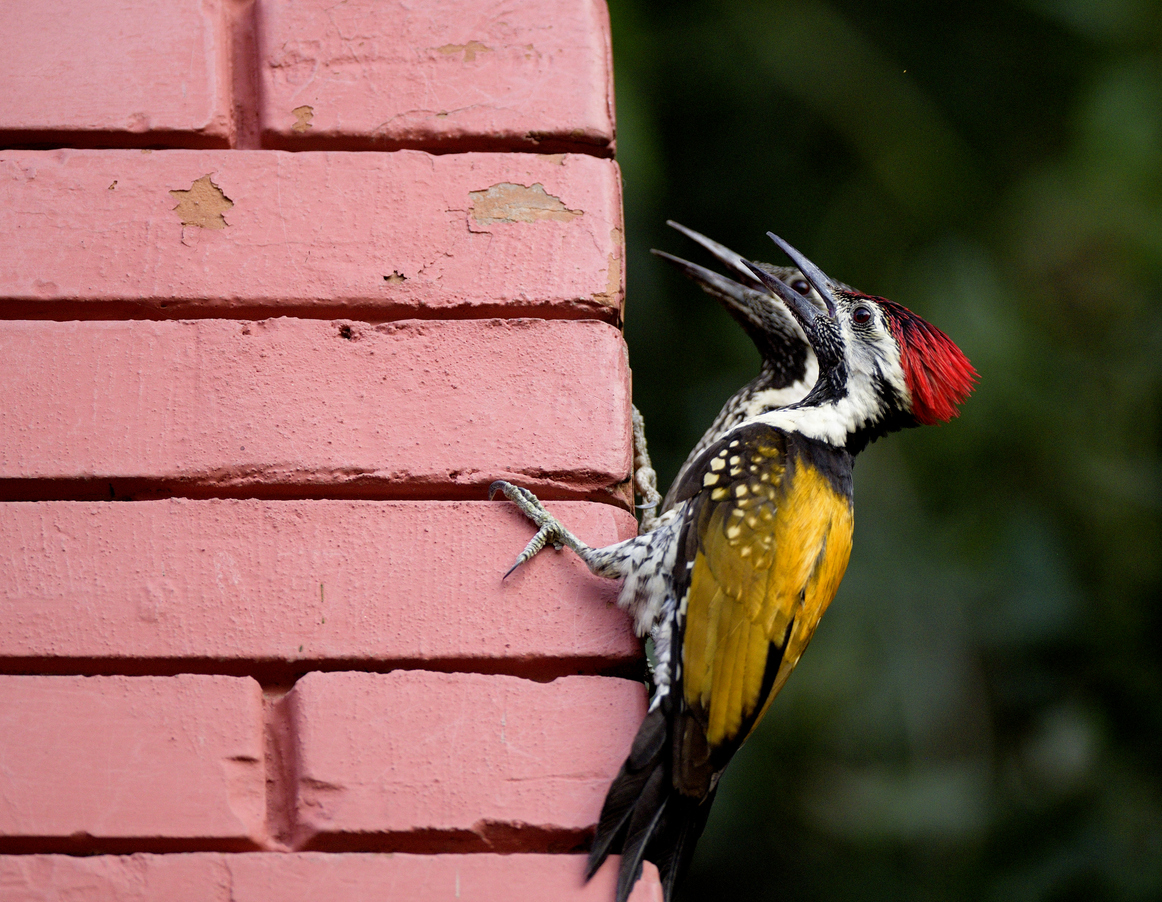

We may earn revenue from the products available on this page and participate in affiliate programs. Learn More ›
As pretty as woodpeckers are when you see them in the wild, these noisy birds can cause major damage to trees and wooden structures on your property if they are left unattended. In fact, a study in Human-Wildlife Conflicts shows that of 1,185 houses surveyed in a New York town, 33 percent had property damage or noise disturbance caused by woodpeckers. The study also found that woodpeckers were more likely to damage grooved plywood siding than tongue-and-groove, board-and-batten, clapboard, or nonwood siding types.
You’re most likely to notice woodpeckers in the springtime, which is mating season. That’s when the medium-size birds are most active and noisy, drumming to attract mates and mark their territories. The hallmark pecking is a sign that the birds are nearby, and may well be the cause of any holes that you find in your trees—or your home.
Prevent woodpeckers from taking over your outdoor space with these tips for handling the winged troublemakers.
Project Overview
Working Time: 5 to 10 minutes
Total Time: 10 minutes
Skill Level: Beginner
Estimated Cost: $5 to $30
Tools & Materials
Bobvila.com may earn a commission from purchases made through these links.
Before You Begin
When getting rid of woodpeckers, always use safe, non-lethal methods to deter these birds and avoid harming them. Woodpeckers, along with their nests and eggs, are protected by law in many regions and killing or harming them can result in legal consequences.
Signs of Woodpecker Damage
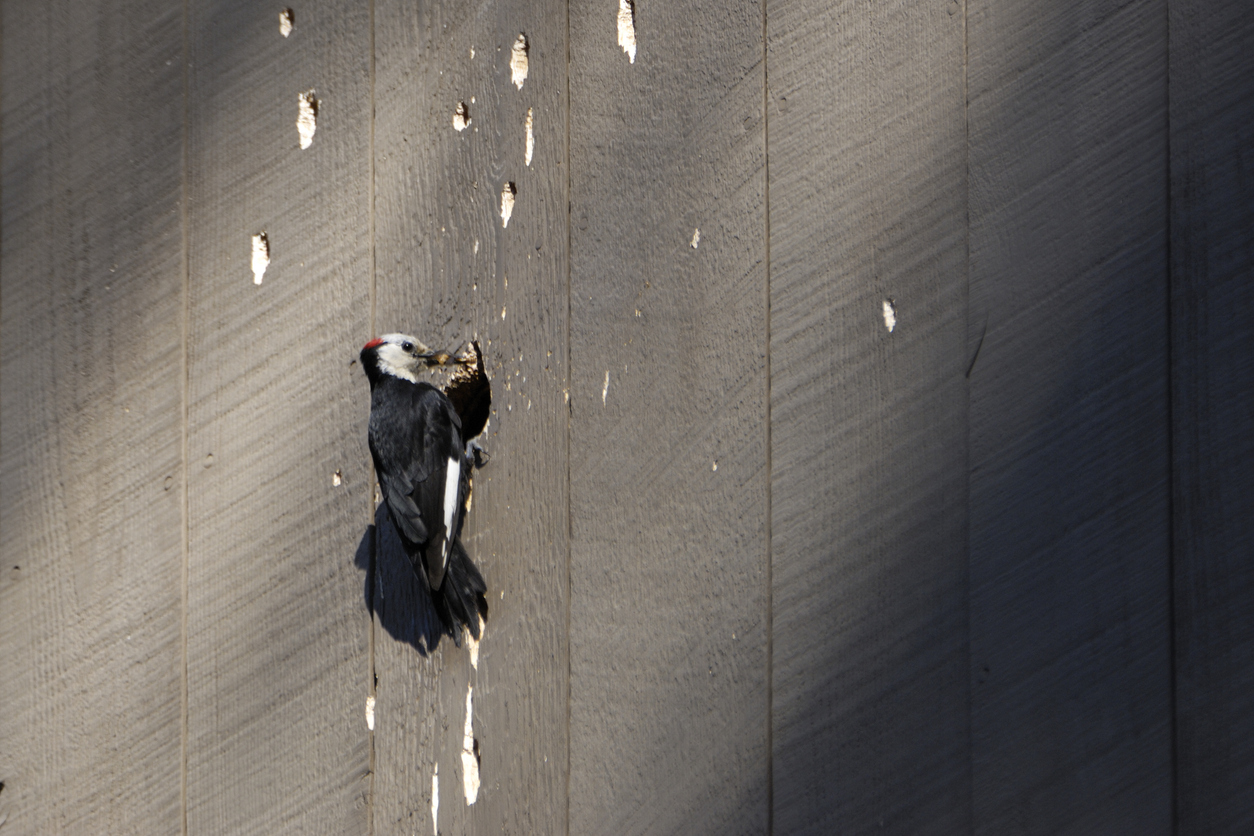
Woodpeckers have short, sharp beaks that can create holes in the siding of a building or the trunk of a tree. Rows of small, round holes in vertical lines in wooden structures like siding, tree trunks, or fences, are likely caused by woodpeckers. The holes are typically about the size of a quarter.
Damaged areas often show signs of peeling and splintering, exposing the inner layers of the wood surface. Larger holes probably indicate a woodpecker is trying to create a nest cavity.
Why do woodpeckers peck?
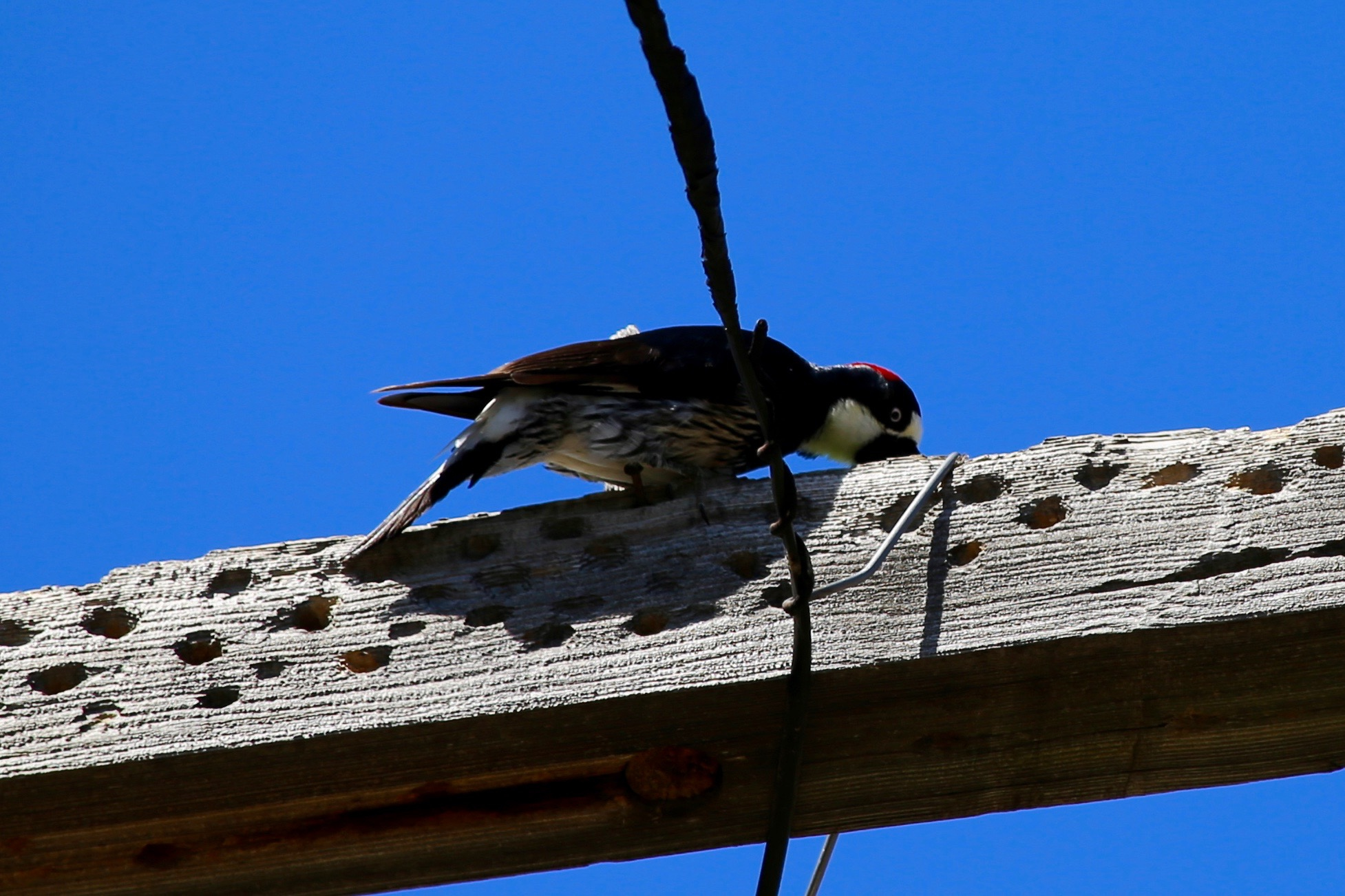
Woodpeckers peck for a variety of reasons. According to David Mizejewski, a naturalist with the National Wildlife Federation, woodpeckers drill into wood mostly “because they’re insectivores and they’re looking for beetle larvae, termites and ants and things like that, that are going to be living in the dead, decaying wood.” He adds that carpenter bees are another of their favorite foods. Woodpeckers’ strong bills are designed to chisel into tree bark and other types of wood to uncover these insects.
Woodpeckers also might be storing food like acorns in the holes they make, or creating nesting cavities in larger holes. Sometimes, they are just making enough noise to stake their claim on a territory and attract a mate.
Most neighborhoods have ample trees for these birds to peck—why would they also want to peck your house siding? “The reason woodpeckers would be drilling into your house is if you have wood that is beginning to rot,” Mizejewski says. “You want to take care of that right away. If the wood [siding] is deteriorating to the point where insects are getting into it, that’s actually a bigger issue that you should be worried about.”
Mizejewski suggests replacing any wood siding or trim on your home that is beginning to rot, which “will solve 99 percent of the problem,” he says.
How to Get Rid of Woodpeckers
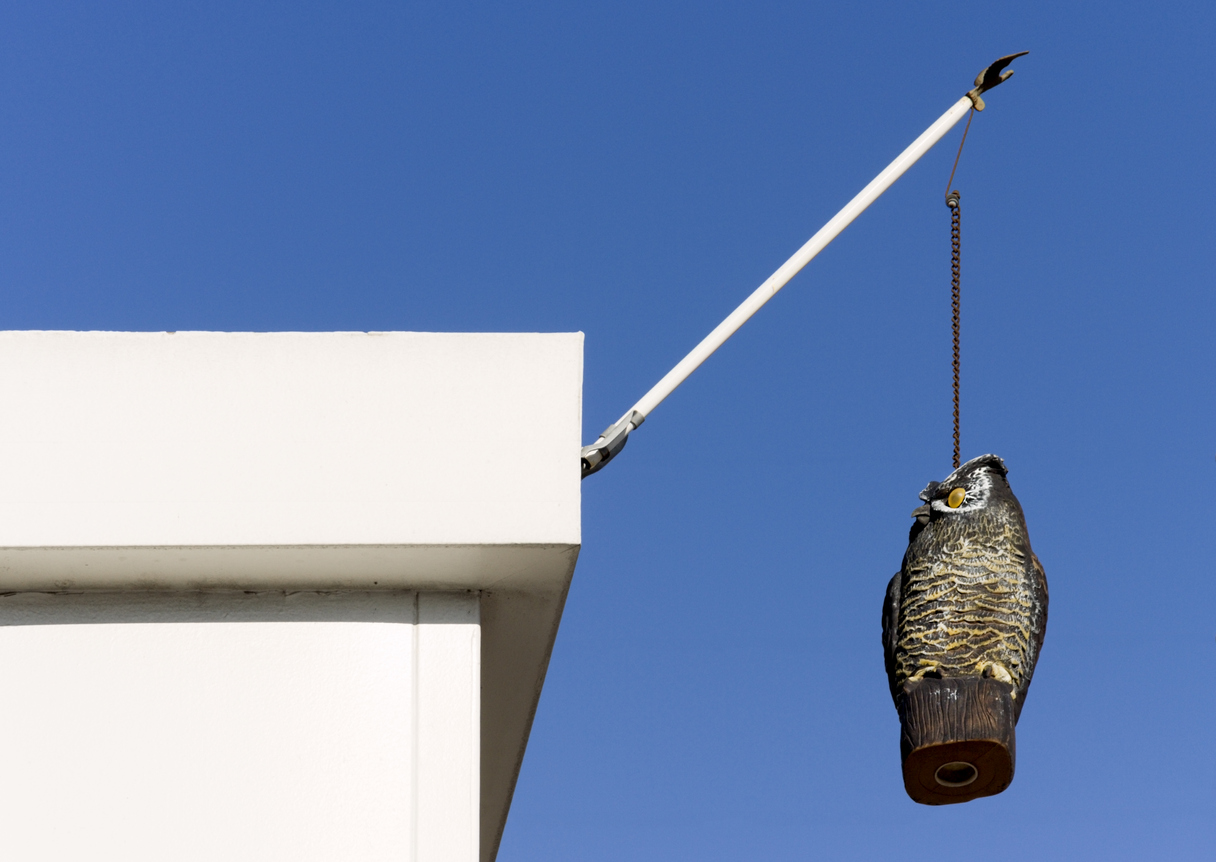
If you’re wondering how to get rid of a woodpecker that’s already made itself at home in your yard, the most important thing to remember is to avoid solutions, like sticky traps, that could harm the birds. Instead, try one of these scare tactics:
- Hang shiny, reflective objects. A mirror—or aluminum foil, in a pinch—is a handy woodpecker deterrent. Put it near a spot where a woodpecker has made its home. The bird will see its reflection, startling it and potentially scaring it away from the area.
- Set up a wind chime or a pinwheel. The noise or motion these objects make in the wind may fool a woodpecker into thinking a predator is nearby, and deter the bird from coming any closer.
- Invite a bogus predator. Decoy owls are another clever way to deter woodpeckers. Owls prey on the smaller birds. Ready-made owl decoys can be purchased online, at home improvement centers, or at local garden stores. Opt for ones with reflective eyes, which look more realistic.
- Make a lot of noise. This last woodpecker deterrent doesn’t require you to buy or set up anything: Just be loud! If there’s a woodpecker nearby, clap your hands, whoop, or make another loud noise to frighten the bird away.
How to Stop Woodpeckers From Pecking Your House

If you try the methods above and aren’t successful, there are a few other techniques you can try to put an end to the incessant drumming of woodpeckers on the house.
- Hang Mylar holographic tape around the areas where woodpeckers are pecking to prevent further damage. Both the tape’s reflective quality and the crinkly sound that it makes when it’s disturbed will spook the birds.
- If scare tactics don’t work for you, try hanging bird netting from the eaves line of the house to the ground. The woodpecker won’t be able to damage the wood on your home if it physically can’t get to it.
Mizejewski adds that you can also fill in holes woodpeckers have made with wood putty—it’ll keep insects and other pests from entering your home.
How to Keep Woodpeckers From Coming Back
Even if you successfully scare invading woodpeckers away, you might have a bigger problem on your hands: an insect infestation.
Inspect the areas around the holes that the woodpecker has made to see if carpenter ants, carpenter bees, or termites are present. If you find insects, we don’t recommend using insecticides to get rid of them—insecticides are likely to kill the woodpeckers too. Instead, opt for a fruity, herbal, or soap-laden solution for insect infestations. If you can’t get rid of the bugs by eco-friendly means, consult with your local wildlife or pest expert to determine the best solution for getting rid of insects and to keep woodpeckers from returning.
Remember to plug up any holes made by wood-boring insects. This will trap the insects deep inside the tree so they will die off, and other members of the colony will not be able to enter the structure easily. The fewer insects there are in trees, the less reason woodpeckers have to return to your yard and cause further damage.
Final Thoughts
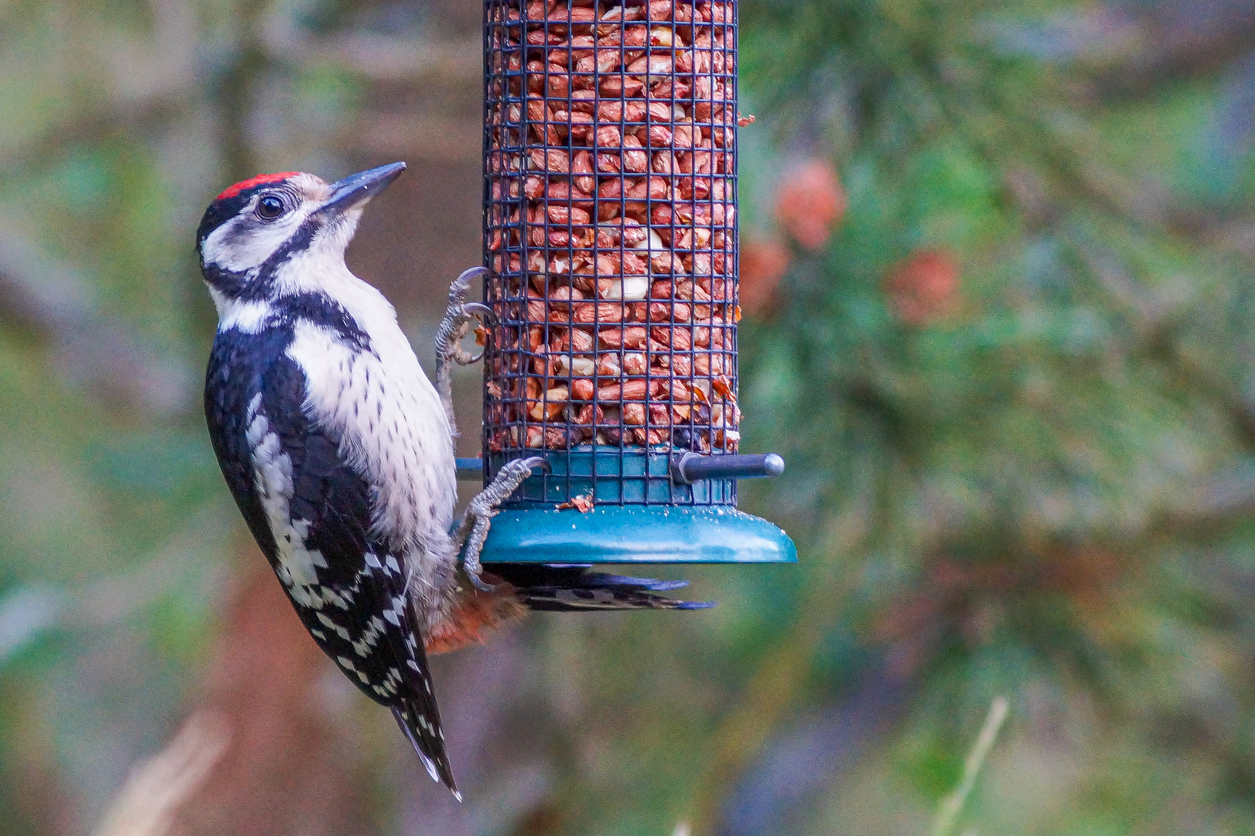
These woodpecker-repelling solutions are the best, most humane ways to resolve woodpecker issues on your property. While it’s important to protect your home and the trees that surround it, it’s equally important to respect these protected birds.
If these methods fail, or if you have questions about how to put this advice into practice on your own property, Mizejewski recommends consulting a local wildlife expert.
“The best thing to do may be to call a professional wildlife removal company who has experience dealing with woodpecker mitigation,” he says. “They’ll be able to do it safely, and do it the appropriate way that’s legal.”
